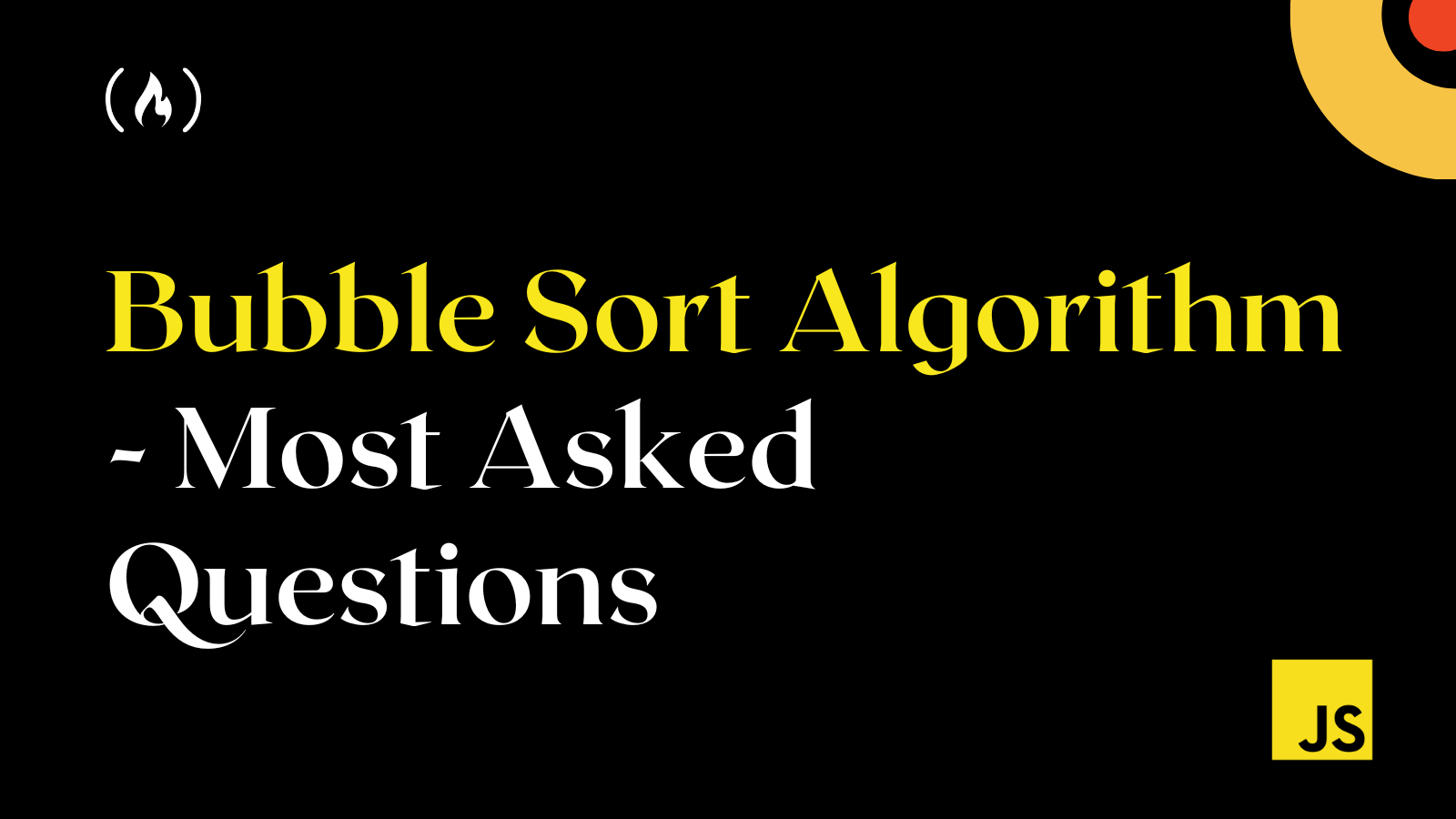Bubble sort is a simple sorting algorithm that repeatedly loops through a list, compares adjacent elements, and swaps them if they are in the wrong order.
The bubble sort algorithm is not the most efficient sorting algorithm when it comes to time complexity. But it is still often used as a starting point for learning and understanding the basic principles of sorting algorithms.
In this article, you will explore the most commonly asked questions about the bubble sort algorithm, including its time and space complexity, best-case and worst-case runtime, implementation in JavaScript, and more.
What is Bubble Sort Algorithm?
Bubble sorting is a way of sorting a list of things, like numbers or words, into a specific order. It works by looking at pairs of adjacent items in the list and swapping them if they are in the wrong order.
For example, if you have a list of [3, 1, 4, 2], bubble sort would compare 3 and 1, seeing that they are in the wrong order, it swaps them to get [1, 3, 4, 2]. It then compares 3 and 4, seeing that they are in the correct order, it moves on to the next pair.
Bubble sort continues to compare adjacent pairs and swap them if necessary until the list is completely sorted. As the algorithm progresses, smaller items "bubble" to the top of the list. This is why it's called bubble sort.
While bubble sort is a simple and easy-to-understand algorithm, it's not the most efficient. In fact, it has a worst-case time complexity of O(n^2), which means that it's not a good choice for sorting very large lists.
But it's still useful for teaching and learning about sorting algorithms and their basic principles.
Implementation of Bubble Sort Algorithm With JavaScript
Here's an example implementation of the bubble sort algorithm in JavaScript:
const bubbleSort = (arr) => {
let swapped;
do {
swapped = false;
for (let i = 0; i < arr.length - 1; i++) {
if (arr[i] > arr[i + 1]) {
[myArray[i], myArray[i + 1]] = [myArray[i + 1], myArray[i]];
swapped = true;
}
}
} while (swapped);
return arr;
};
let myArray = [12, 10, 3, 7, 4];
console.log(bubbleSort(myArray)); // returns [3, 4, 7, 10, 12]
In this implementation, you define a function that takes an array as its input. The function uses two nested loops to iterate over the array and compares adjacent elements.
You can read more on how to write the bubble sort algorithm in this detailed article.
Most Asked Questions About Bubble Sort Algorithm
Let’s now explore some of the most common questions you would ask about the bubble sort algorithm to give you clarity.
1. What is the best-case runtime complexity of standard bubble sort?
The best-case runtime complexity of standard bubble sort is O(n) when the input array is already sorted, and no element swap is needed.
let myArray = [3, 4, 7, 10, 12];
console.log(bubbleSort(myArray)); // returns [3, 4, 7, 10, 12]
2. What is the time and space complexity of bubble sort?
The time complexity of bubble sort is O(n^2), where n is the number of elements in the array. The space complexity of bubble sort is O(1) because it uses only a constant amount of extra memory.
3. What type of algorithm is bubble sort?
Bubble sort is a simple sorting algorithm that repeatedly loops through a list, compares adjacent elements, and swaps them if they are in the wrong order.
4. What is the best-case time complexity of bubble sort?
The best-case time complexity of bubble sort is O(n), where n is the number of elements in the array. This occurs when the input array is already sorted, and no element swap is needed.
5. What is the average case complexity of bubble sort?
The average case complexity of bubble sort is O(n^2), where n is the number of elements in the array. This occurs when the input array is unsorted, and multiple elements have to be swapped.
6. What is the worst time complexity of bubble sort?
The worst time complexity of bubble sort is O(n^2), where n is the number of elements in the array. This occurs when the input array is reverse sorted, and every element has to be swapped.
Wrapping Up
In this article, we've covered several frequently asked questions about bubble sort, including its time and space complexity, best and worst-case runtime, and how to implement it in JavaScript.
Hopefully, this article has given you a better understanding of bubble sort and its limitations. Remember that while bubble sort is a good starting point for learning about sorting algorithms, more efficient algorithms are available for sorting larger datasets.
Have fun coding!
You can access over 200 of my articles by visiting my website. You can also use the search field to see if I've written a specific article.

